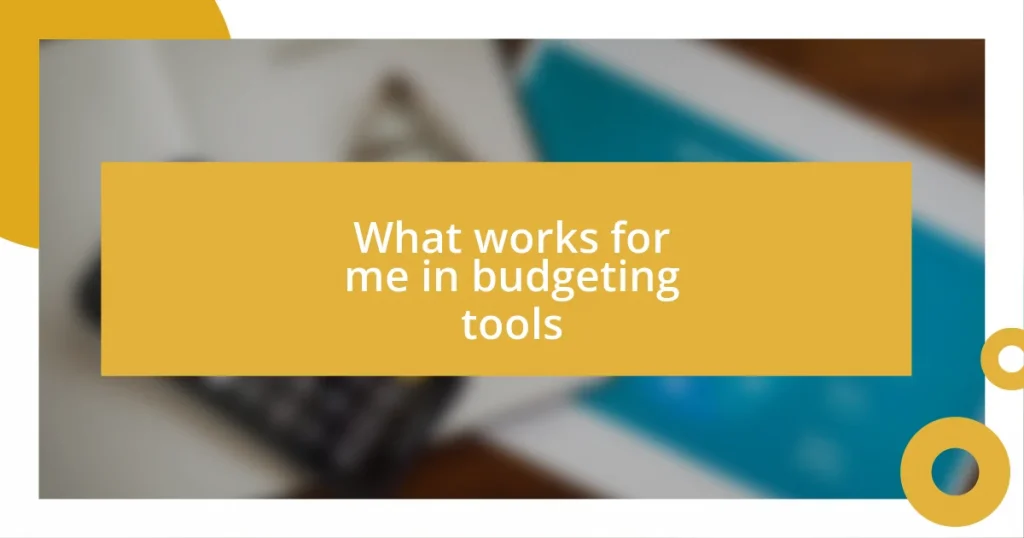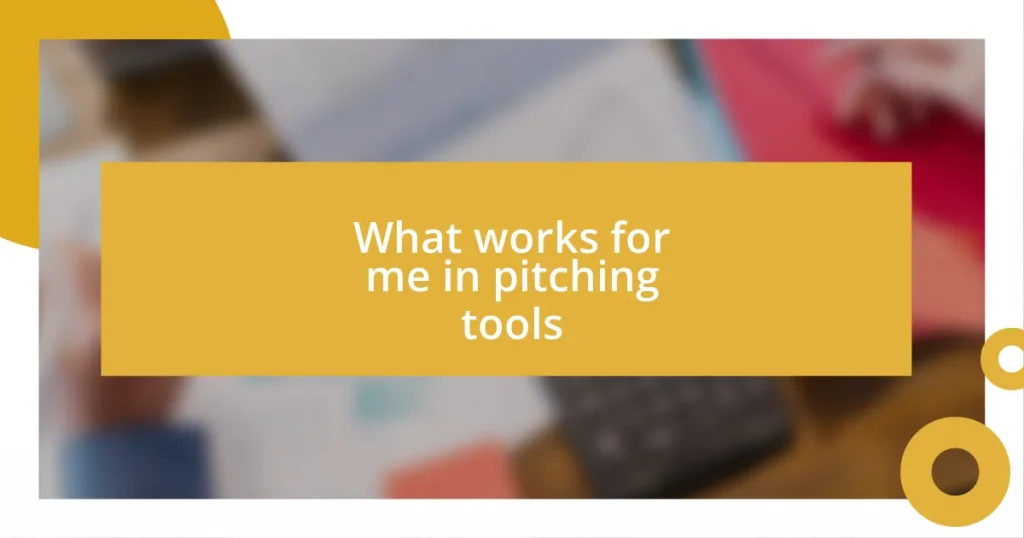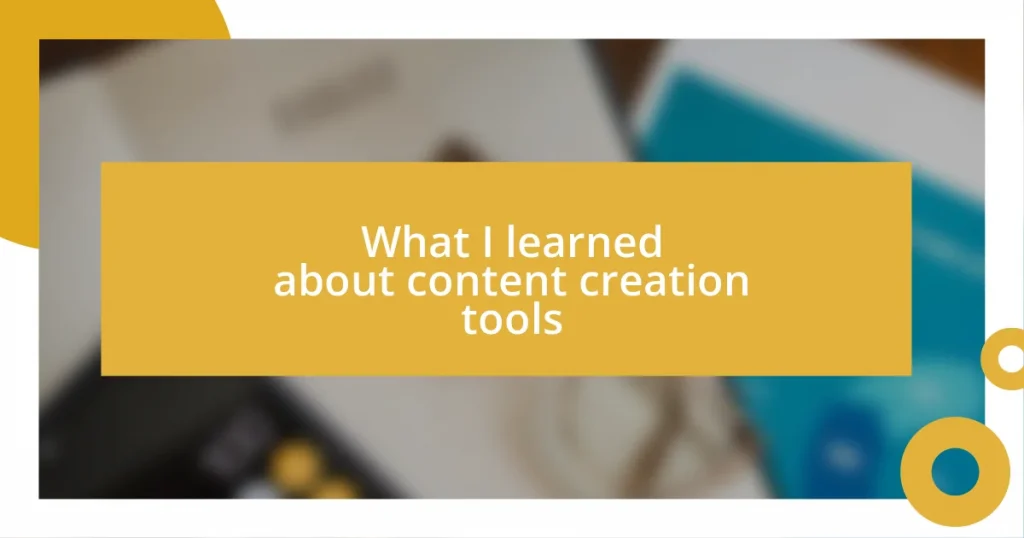Key takeaways:
- Understanding various funding sources, such as grants, crowdfunding, loans, and angel investors, is crucial for aligning financial strategies with project needs.
- Effective communication and transparency with stakeholders foster trust, enhance relationships, and can lead to further funding opportunities.
- Adapting to challenges and maintaining a diverse funding strategy, along with a robust support network, are essential for resilience and innovation in the funding process.

Understanding multiple funding sources
Understanding multiple funding sources can initially feel overwhelming, but it’s vital to grasp how each source fits into your financial puzzle. I remember when I first started exploring various avenues like grants, crowdfunding, and angel investors. I had countless questions racing through my mind: How do I prioritize them? Will one source compromise the benefits of another?
Each funding source has its unique characteristics and implications. For example, crowdfunding allows for a wealth of input and support from your community, but it also demands a lot of transparency and engagement. Reflecting on my experience, I realized that while it was exciting to connect with potential backers, their expectations often mirrored a personal investment. Have you ever felt pressure to meet the hopes of others?
Moreover, understanding the conditions that come with each source can significantly impact your strategy. I’ve learned that grants might seem like free money, but they often come with stringent reporting requirements. It’s a balancing act—knowing when to embrace the freedom of a less-restricted source or when to buckle down under the responsibilities of a more formal funding route. How do you weigh your options when faced with such diverse funding opportunities? That’s where knowing your project’s needs and your own comfort level with each type of source becomes essential.

Identifying your funding needs
Identifying your funding needs starts by reflecting on the specifics of your project. I recall an early experience where I mapped out not only my financial requirements but also the timeline for my project. It felt like piecing together a puzzle; I had to be clear on whether I needed funds for immediate expenses, like development costs, or longer-term investments, such as marketing. I’ve learned that having a detailed list of expenses, including fixed and variable costs, significantly simplifies the funding search.
Next, it’s crucial to evaluate how much control you’re willing to give up and how urgently you need the funds. For instance, with my first startup, I was anxious to accept a loan rather than dilute my equity by bringing in investors. The pressure to grow quickly led me to seek out angel investors. That experience taught me about negotiating terms and understanding the weight that different funding sources bring. Can you visualize that moment when you realize you need to prioritize what you truly need versus what could just be nice to have?
Ultimately, pinpointing your funding needs is about aligning your vision with the resources available. I remember a moment of clarity when I finally recognized the balance between wanting to maintain ownership and the necessity of obtaining sufficient support. It’s a delicate dance where you must identify what your goals are and what type of funding would best help you achieve them.
| Funding Source | Key Considerations |
|---|---|
| Grants | Often perceived as free money but may come with strict terms and reporting requirements. |
| Crowdfunding | Engages your community but requires significant transparency and interaction. |
| Loans | Maintains ownership but entails repayment and potential interest. |
| Angel Investors | Provides capital quickly, yet can result in shared decision-making and loss of equity. |

Evaluating funding options available
Evaluating funding options involves more than just listing potential sources; it’s about understanding how each fits your needs. I vividly remember sifting through multiple platforms, each promising different benefits. It felt like standing at a buffet where every dish looked appealing, but I had to decide what would truly nourish my project. As I dug deeper into the specifics of each option, I found that the effort invested in evaluation truly paid off—even when it felt tedious.
To make this process more manageable, I created a checklist of criteria that mattered most to me. This exercise clarified what aspects were non-negotiable and which could be flexible.
- Alignment with Business Goals: Does the funding source support the vision I have for my project?
- Time Commitment: How much time am I willing to invest in securing and managing this funding?
- Control vs. Capital: Am I ready to share decision-making power with investors, or do I want to maintain full control?
- Funding Amount: Does the potential amount offered meet my needs without stretching my timeline too thin?
- Reputation and Terms: What are the terms of the funding? Are there hidden fees or reputational risks I should be aware of?
This approach helped me filter through options and prioritize those that resonated with my values, which ultimately gave me confidence moving forward. Have you ever felt overwhelmed by choices that seemed perfect on the surface but lacked substance upon closer inspection?

Strategies for balancing funding
Balancing multiple funding sources requires a thoughtful strategy and proactive management. One method I found effective is creating a clear timeline that maps out when each source will be tapped. For example, in a recent project, I aligned the influx of crowdfunding with product development milestones. This way, I wasn’t juggling funds from multiple streams all at once. Have you ever felt the stress of coordinating various funding timelines? It can feel like a high-stakes game, but having a structured plan helped me stay focused.
Another strategy that emerged from my experience was maintaining open communication channels with all stakeholders involved. I remember a time when I shared regular updates with angel investors while engaging with my crowdfunding backers. This transparency fostered trust and allowed me to gather valuable feedback, keeping everyone aligned with the project’s vision. It’s like having a team that feels involved in the journey—doesn’t that just energize the whole process?
Lastly, diversifying funding sources has proven invaluable in my journey. By leveraging a mix of grants, loans, and crowdfunding, I not only spread out risk but also increased overall support. I learned firsthand that relying solely on one source can create pressure, especially with repayment terms looming or donor expectations. Isn’t it reassuring to know that you have options? That flexibility allows me to prioritize what’s best for my project when unexpected challenges arise, ultimately leading to a more sustainable future.

Effective communication with stakeholders
Effective communication with stakeholders is crucial when balancing multiple funding sources. I’ve learned that establishing consistent and transparent updates can make a world of difference. When I first started, I was hesitant to share every little detail with my investors, thinking it might overwhelm them. But soon enough, I found that sharing regular progress reports not only kept them informed but also made them feel genuinely invested in the journey. Have you noticed how a simple update can transform the perception of a project?
Additionally, I’ve found that being receptive to feedback from stakeholders fosters a collaborative environment. There was a moment during a funding round when I received constructive criticism from one of my backers, which initially stung a bit. But I realized it opened up a critical dialogue that ultimately strengthened our relationship and the project itself. It’s fascinating how open communication can turn potential conflicts into opportunities for growth, isn’t it?
Finally, addressing concerns promptly and empathetically is something I prioritize. I remember a late-night call when a major investor expressed anxiety about the timeline of our project. Instead of deflecting or postponing the conversation, I listened intently and provided reassurance along with a revised timeline that reflected their concerns. It was rewarding to see their reservations dissipate as we worked together on a solution. How often do we find that taking the time to listen can strengthen our partnerships in unexpectedly powerful ways?

Tracking and reporting funding usage
Tracking and reporting funding usage is essential in maintaining clarity and accountability across all your funding sources. Early in my experience, I utilized a simple spreadsheet to record every transaction, categorized by source. This approach helped me visually grasp where money was coming from and going, parsing it into clear chunks that were easily digestible. Have you ever felt overwhelmed by receipts and transactions? Trust me, simplifying the process can make a world of difference.
As I progressed, I implemented weekly check-ins to review the funding report with my team. This not only kept us on the same page but also instilled a culture of responsibility. One week, I discovered we’d slightly overspent in one area due to a miscalculation. By addressing it swiftly in our meeting, we adjusted our spending for the following weeks. I realized then that proactive tracking isn’t just about numbers; it’s about fostering a mindset of adaptability among your team.
Moreover, sharing these reports with stakeholders became a game-changer. Initially, I was apprehensive about revealing such detailed financials, fearing it would overwhelm them. But to my surprise, they appreciated the transparency, which deepened our trust. I recall a time when detailed reporting helped me secure another round of funding because I could clearly demonstrate how previous investments were utilized. Isn’t it remarkable how transparency can provide new opportunities? I’ve learned that showing how diligently I track funding can spark confidence in potential backers, ensuring they see the value of investing in the journey.

Adapting to funding challenges
Adapting to funding challenges has been a critical aspect of my journey. I remember a period when one of my major funding sources encountered unexpected delays. It felt like a cold splash of water on my plans. Instead of panicking, I decided to pivot and explore alternative funding options. This approach not only eased my stress but also opened up new opportunities that I hadn’t considered before. Have you ever noticed how, in moments of crisis, creativity can soar?
There was also a time when changes in market conditions required me to adjust my project scope while securing funds. Initially, I thought it would alienate my existing supporters. However, I reached out to them with a detailed explanation of how the change could lead to better outcomes. Their response was unexpectedly positive! It turned out that they appreciated my honesty and vision more than I anticipated. Isn’t it amazing how transparency can turn potential setbacks into renewed trust?
Throughout these experiences, I realized that being flexible with my funding strategy is a survival skill. One evening, while discussing challenges over dinner with a fellow entrepreneur, I learned the importance of tapping into my network for unexpected resources. In that moment, it clicked—I needed to maintain not just a diverse funding portfolio but also a diverse network of support. Have you ever felt that rush of inspiration when you open yourself up to collaboration? Embracing these challenges has only made my approach to funding more dynamic and resilient.















